![]()
![]()
![]()
Use LEFT and RIGHT arrow keys to navigate between flashcards;
Use UP and DOWN arrow keys to flip the card;
H to show hint;
A reads text to speech;
29 Cards in this Set
- Front
- Back
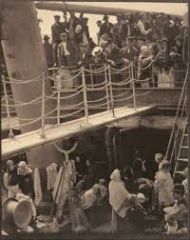
|
Alfred Stieglitz, The Steerage 1907
· Another example of art challenging aesthetics · “How photography can be used to embark somekinds of aesthetic review” |
|

|
Andy Warhol, 100 Cans, 1962 Pop art, where artists used various aspects of popular culture as subjects for their work in an effort to get people to pay attention to the commercial world around them. 100 Cans was painted by hand, assisted by stencils. A close look reveals the fact that the cans are not identical, nor are they evenly spaced. The bottom row is cut off, suggesting that they continue beyond the confines of the canvas, which leads to another aspect of the work—Warhol’s interest in machine-like processes such as mass production. Mass production is impersonal, and America was becoming more and more depersonalized. But mass production is also efficient, and Warhol admired that efficiency. He even said in 1962, "I want everybody to think alike. . . . I think everybody should be a machine." |
|

|
Arshile Gorky, The Liver is the Cock's Comb, 1944 Abstract Expressionism - |
|

|
Barbara Kruger, Untitled, 1987 American conceptual/pop artist Barbara Kruger Feminist implicates viewers by confounding any clear notion of who is speaking. These rigorously composed mature works function successfully on any scale. Their wide distribution—under the artist’s supervision—in the form of umbrellas, tote bags, postcards, mugs, T-shirts, posters, and so on, confuses the boundaries between art and commerce and calls attention to the role of the advertising in public debate. |
|

|
Daniel Libeskind, The World Trade Center |
|
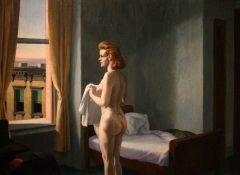
|
Edward Hopper, Morning in a City, 1944 Realism *· Concepts of Isolation in the urban world· Aesthetics ( Beauty ) being challenged· *rethinking the way women are represented in art· “art does not have to be beautiful to bemeaningful” |
|

|
F.L. Wright, Robie House, Chicago IL, 1908
|
|
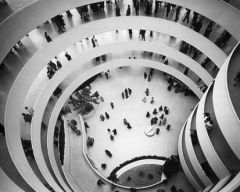
|
F.L. Wright, The Guggenheim Museum, New York, 1956 |
|
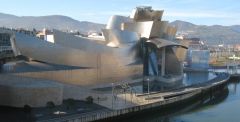
|
Frank Gehry, The Guggenheim, Bilbao Spain, 1992 |
|
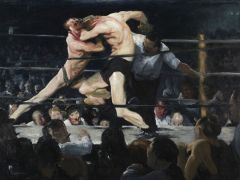
|
George Bellows, Stag at Sharky's, 1907 *Realism, the mundane, Photo-realism |
|

|
George Luks, The Wrestlers, 1905 Realism |
|
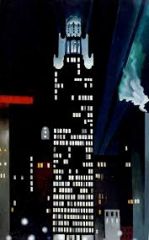
|
Georgia O'Keeffe, Radiator Building New York, 1927 |
|
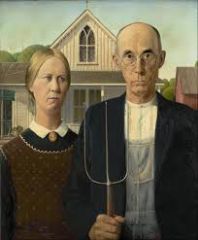
|
Grant Wood, American Gothic, 1930 |
|
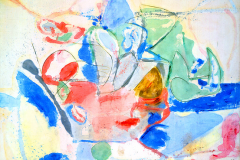
|
Helen Frankenthaller, Mountains and Sea, 1952 · Non-RepresentationalArt · just color and form which does not have apredefined form or representation) You seeyour own perspective which is unique from other people’s |
|

|
Jackson Pollock, Autumn Rhythm #30, 1950 · Non-RepresentationalArt · just color and form which does not have apredefined form or representation) You seeyour own perspective which is unique from other people’s |
|
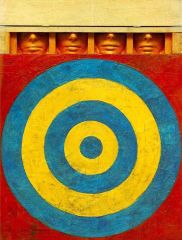
|
Jasper Johns, Target with Four Faces, 1955 |
|

|
Joseph Stella, The Voice of the City, 1920 · Mixing futurismand Cubism(* think Picasso) Into Cubo-Futurist · futurismtechnology and advancement is god |
|

|
Judy Chicago, The Dinner Party, 1979 |
|
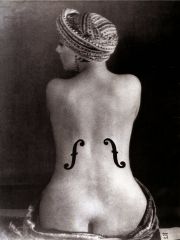
|
MAN RAY, LE VIOLIN D'INGRES, 1924 DadaMovement (the absurd) |
|

|
Marcel Duchamp, Nude Descending a Staircase #2, 1912 Abstract Art ( Simplification intoGeometry/Organic Shapes) · Came from the advancement of the camera takingthe closest to reality of an image possible. · Differentkinds of reality depending on the way an artist has constructed. · Context removal due to photographs |
|
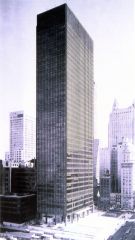
|
Mies Van der Rohe, Seagrams Building, New York, 1958 |
|

|
Phillip Johnson, The Glass House, New Cannan CT, 1949 |
|
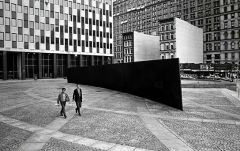
|
Richard Serra, Tilted Arc, 1970 |
|
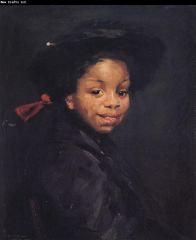
|
Robert Henri, Eva Green, 1907 Realism |
|
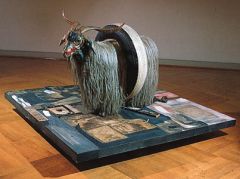
|
Robert Rauschenberg, Monogram , 1959 |
|
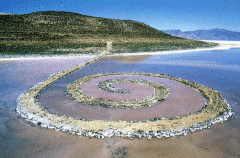
|
Robert Smithson, The Spiral Jetty, 1970 |
|

|
Robert Venturi, Vanna Venturi House, Philadelphia, PA, 1962 |
|
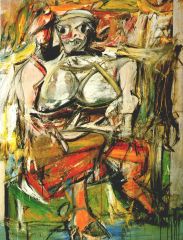
|
Willem De Kooning, Woman I, 1950 |
|
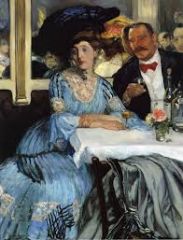
|
William Glackens, Chez Mouquin 1905 |

